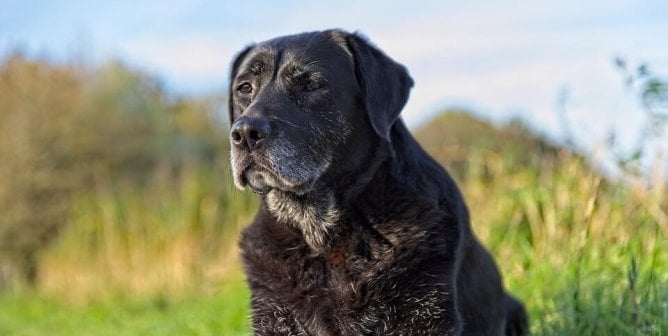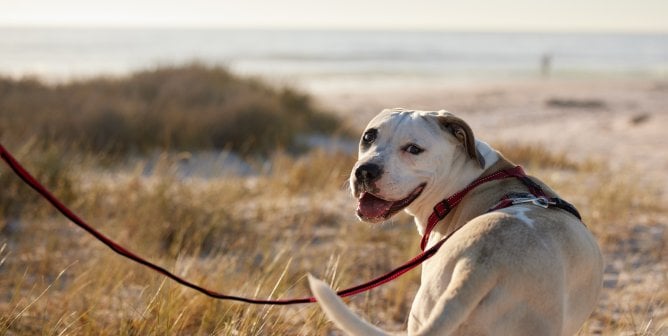It’s the tutorial you may not have known you needed: How to Greet a Dog 101. We get it—dogs are the coolest, and it can be tempting to greet every dog you see with enthusiasm. But would you like it if a stranger rushed up to you, began stroking you, picked you up, squealed at you, hugged you, or kissed you? Just as those things would probably make you uncomfortable, invading dogs’ personal space can easily overwhelm them, too. We can help every dog we meet build confidence and trust by following these best practices for greeting an unfamiliar dog.
Whether it’s a dog you encounter on a hike or your sister’s newly adopted canine companion, follow these do’s and don’ts to keep everyone safe.
Do’s
-
Do ask! ✅
First things first: Ask the dog’s guardian if it’s OK for you to approach. If not, that’s OK. Remember, every dog is different, and this one might not enjoy meeting other people—it’s nothing personal.
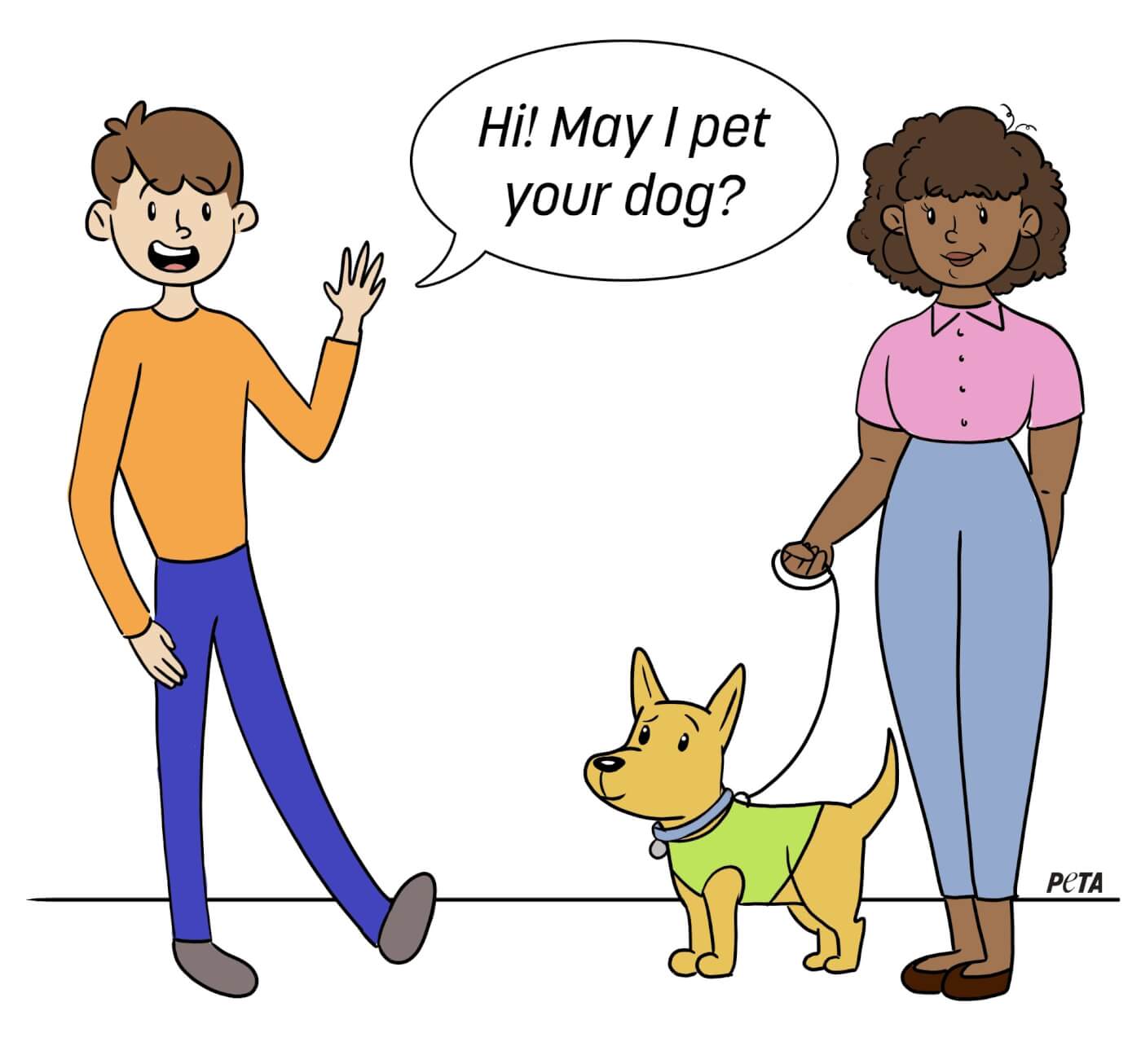
-
Do behave in a nonthreatening manner. ✅
Rather than approaching head on—which could be perceived as aggressive—assume a nonthreatening posture by keeping your side or back toward the dog. Some dogs are more apt to approach if you kneel or squat down.
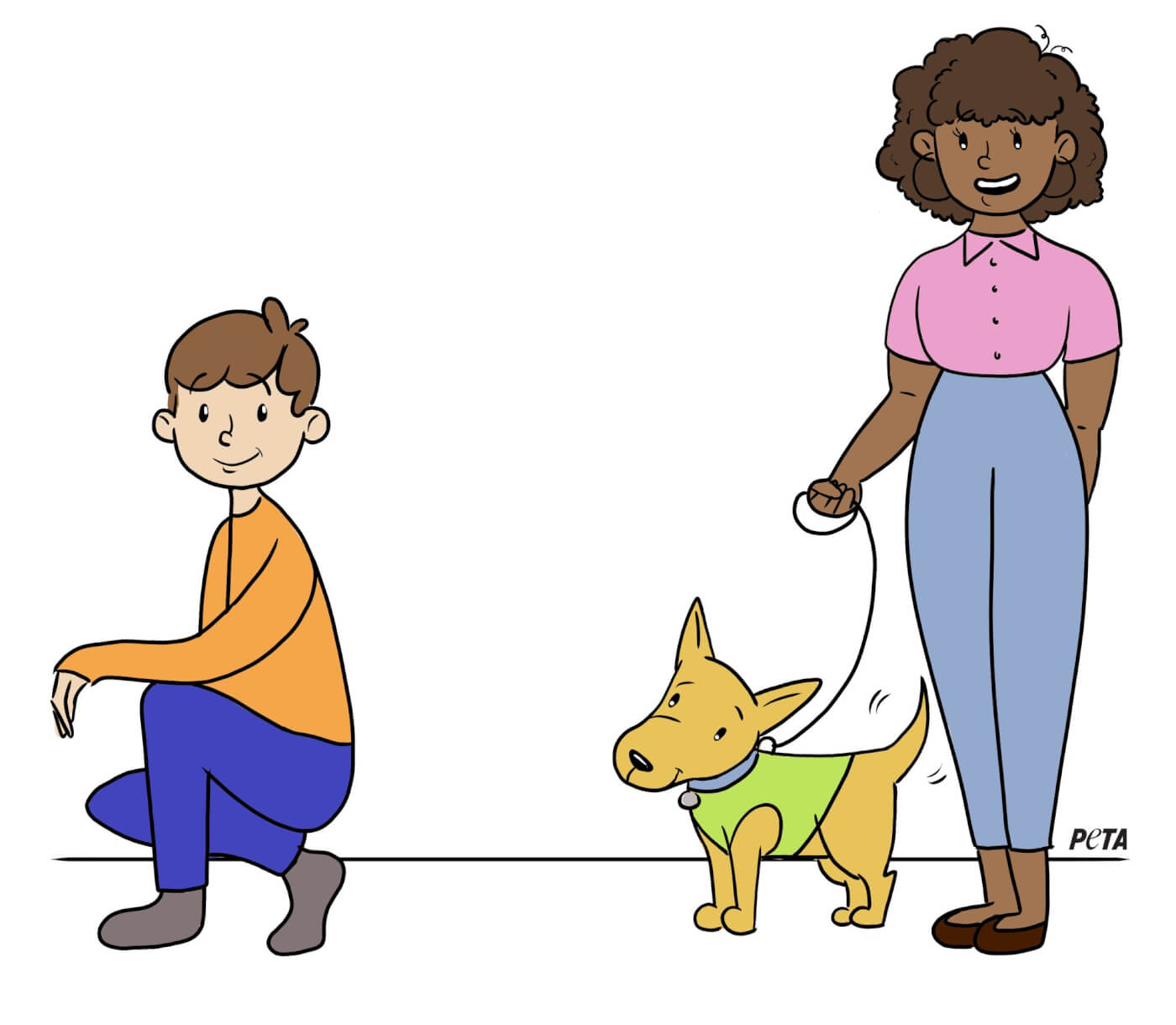
-
Do let the dog approach you. ✅
Turn your side or back to Fido, and allow him to approach you. Be patient. He may sniff you, approach slowly, come right to you, hold his ground, or back away. Always take your cues from Fido. If he distances himself from you, that’s his choice. Never force your affections on a dog.
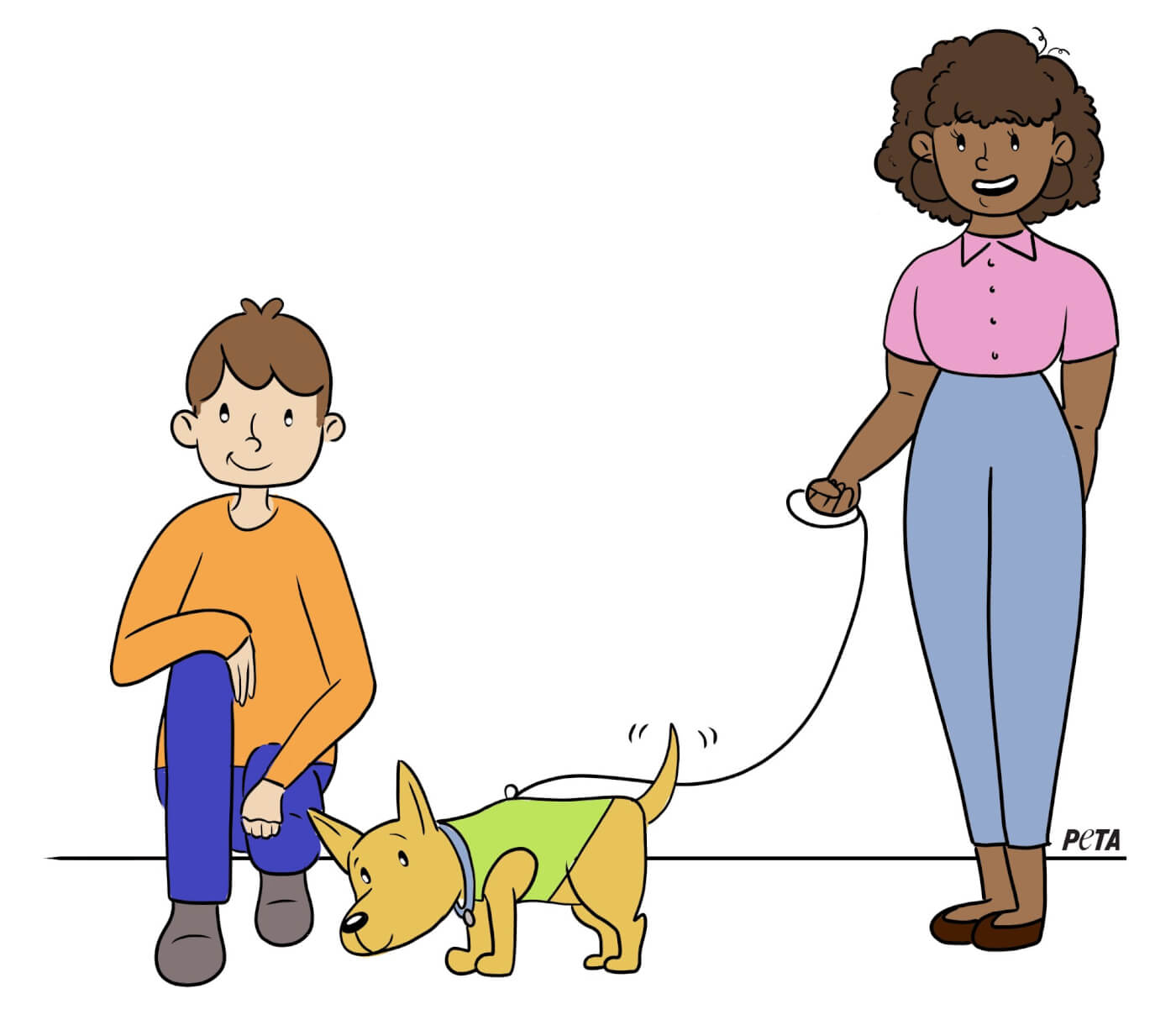
-
Do proceed with caution when petting. ✅
If you have the guardian’s consent, and Fluffy seems amenable, gently pet her on the side of the face or body or on the back. If at any point she displays any signs of stress or discomfort (freezing, going rigid, growling, licking her lips, pulling away, tucking her tail, yawning, or avoiding eye contact), slowly remove your hand and step away. No greeting is more important than a dog’s comfort or your own safety.
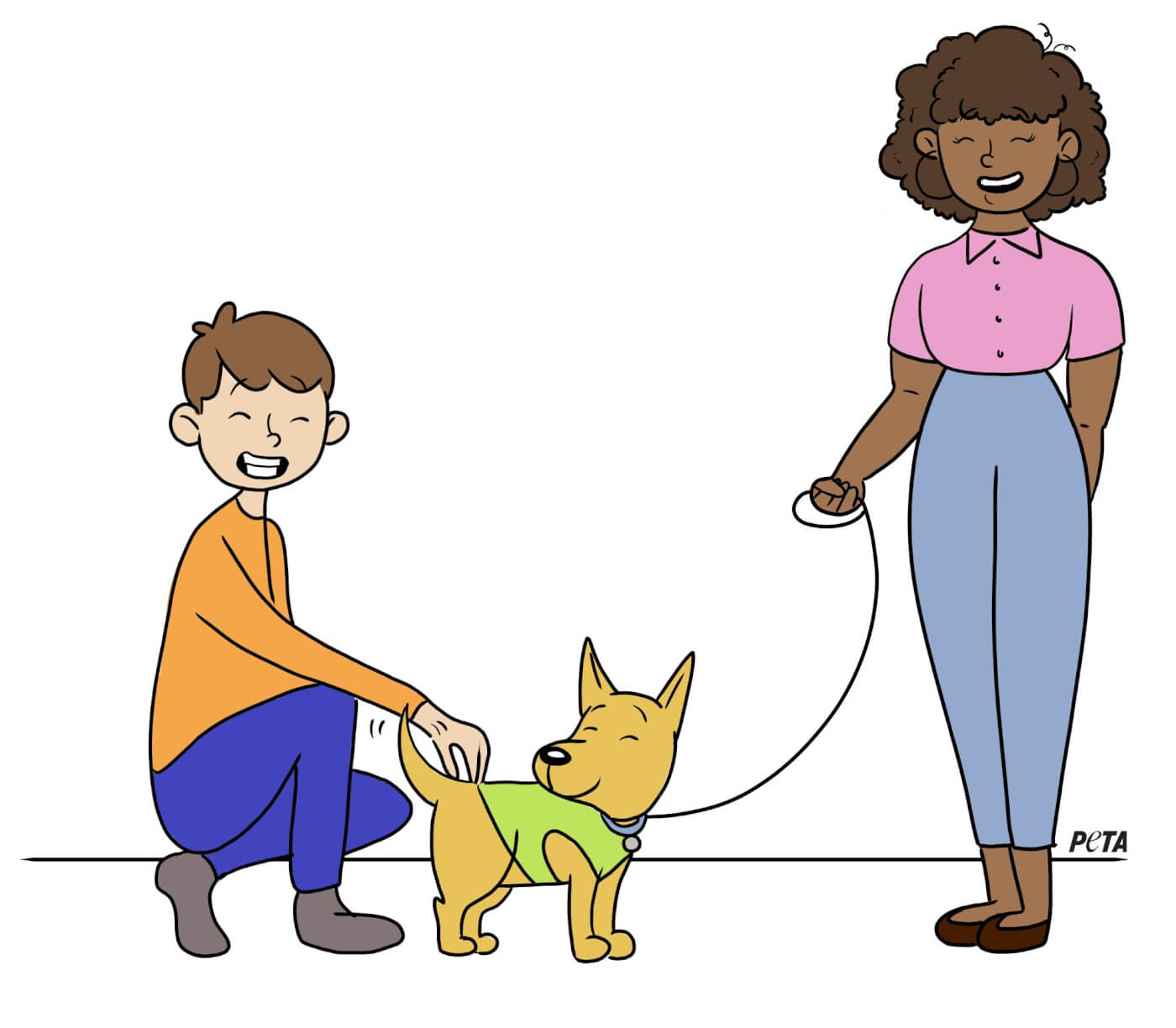
Don’ts
-
Don’t make eye contact. ❌
Staring is perceived by most dogs as adversarial. To avoid unintentionally coming across as threatening, keep your gaze away from the dog’s eyes.
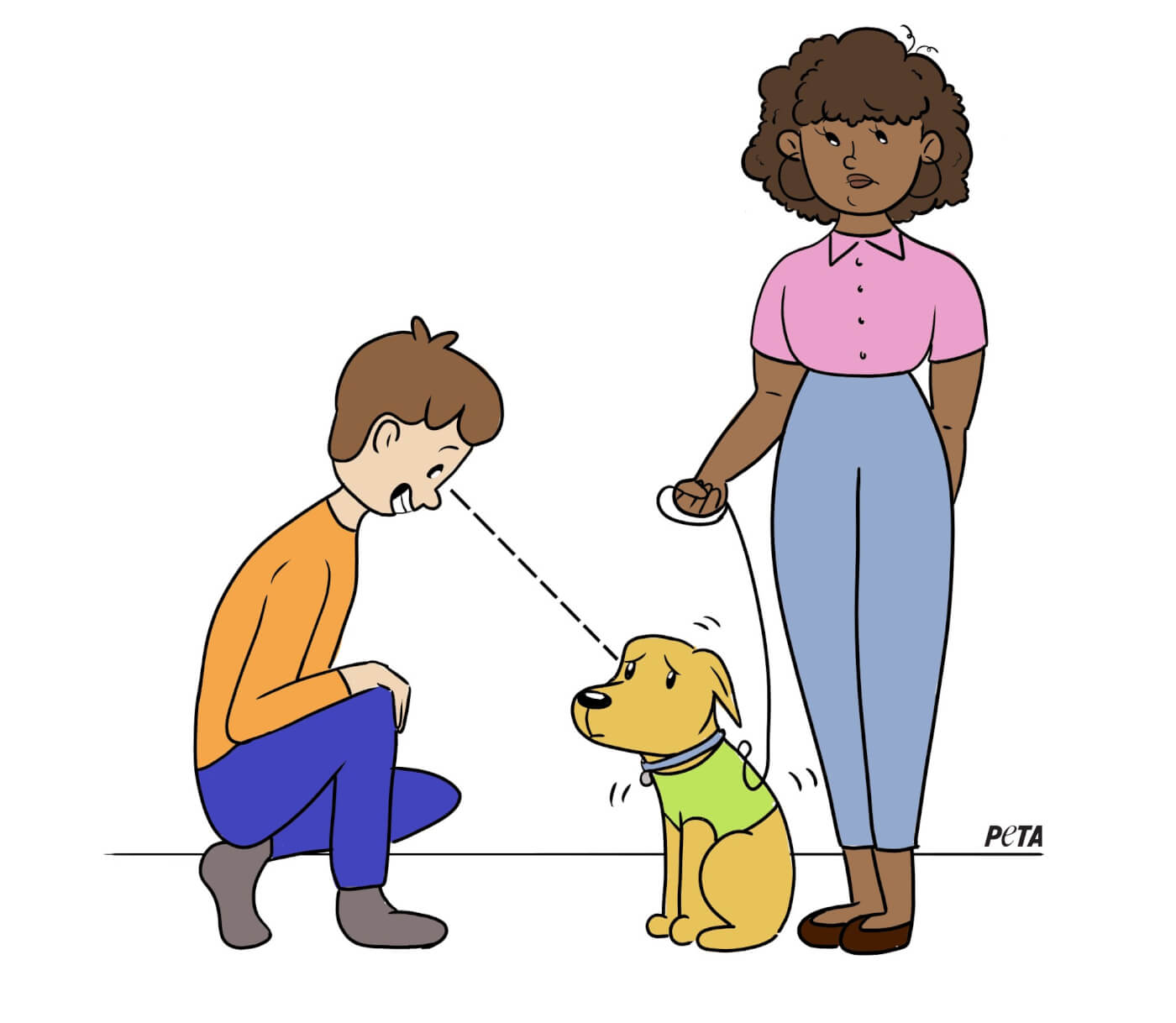
-
Don’t tower over the dog. ❌
Hovering overhead combined with petting the top of the dog’s head can be perceived as intimidating and aggressive.
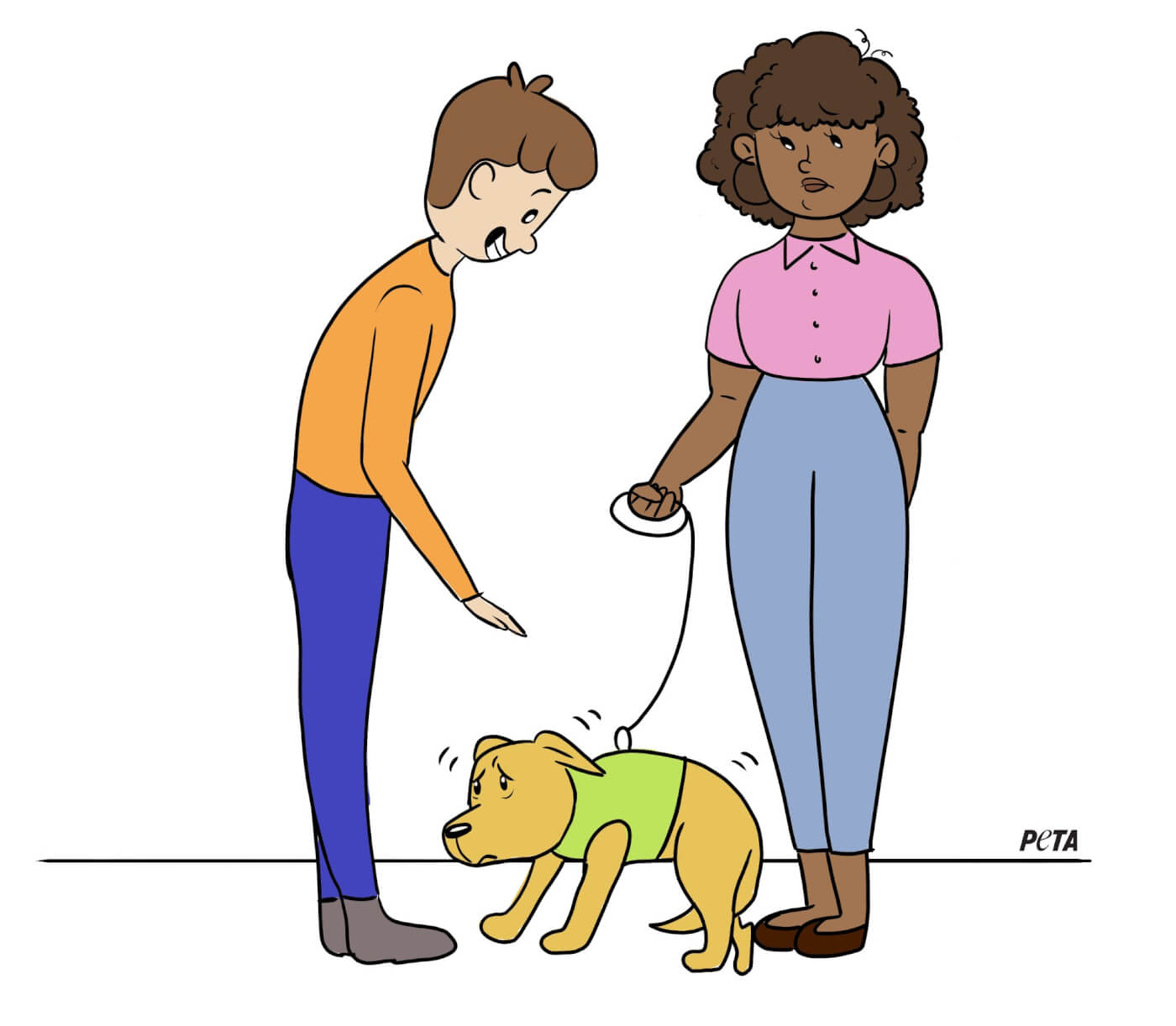
-
Don’t grab the dog. ❌
Again—it’s all about personal space. You may have good intentions, but grabbing an unfamiliar dog for any reason could be perceived as intrusive and put them on the defensive.
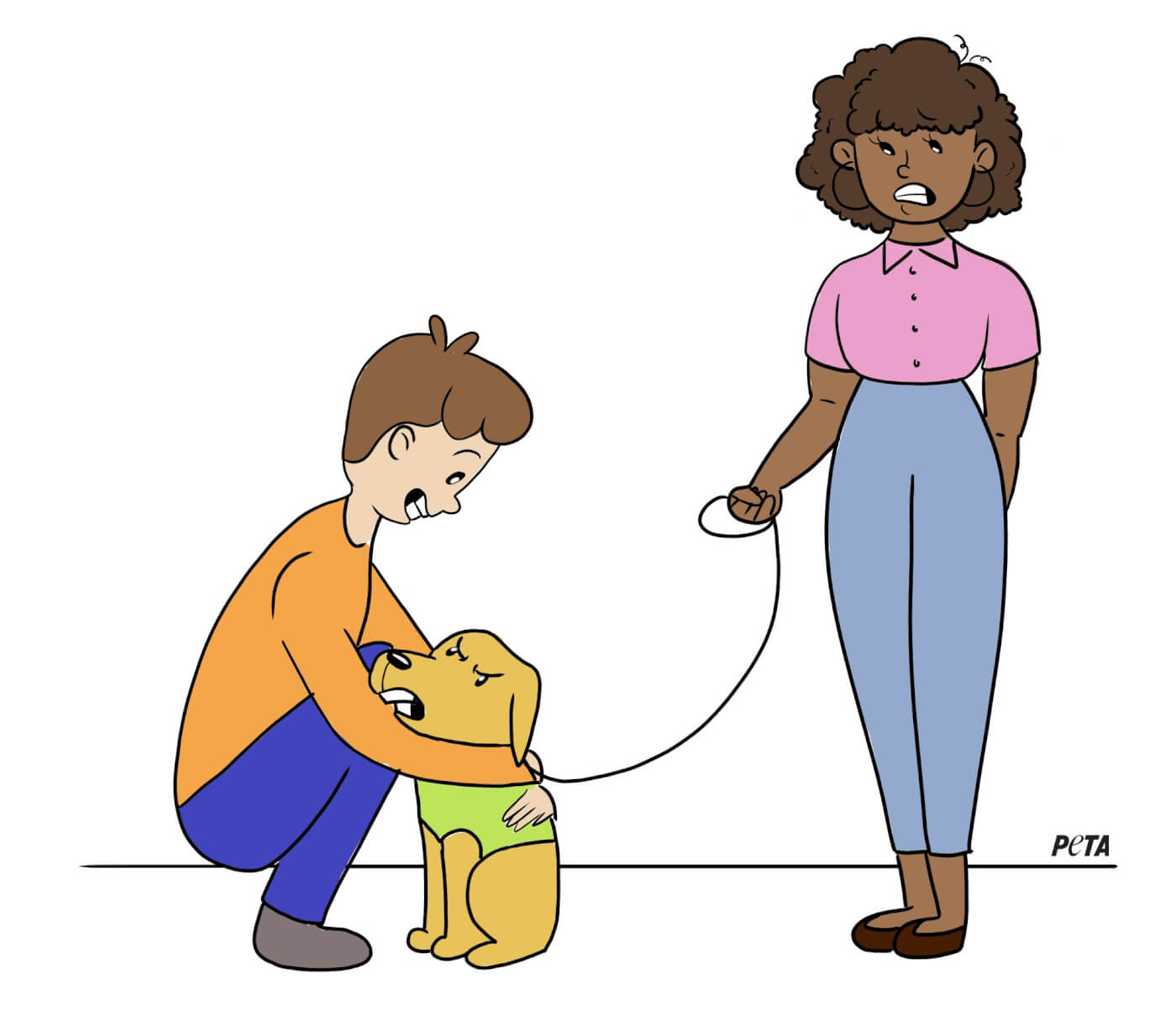
-
Don’t be loud. ❌
It’s understandable—you see Fido or Bella on a coffee shop patio and your heart melts. But resisting the urge to squeal and spout baby talk in their face is a must. Dogs are sensitive to noise, and it can overwhelm them, especially the shy or the skittish.
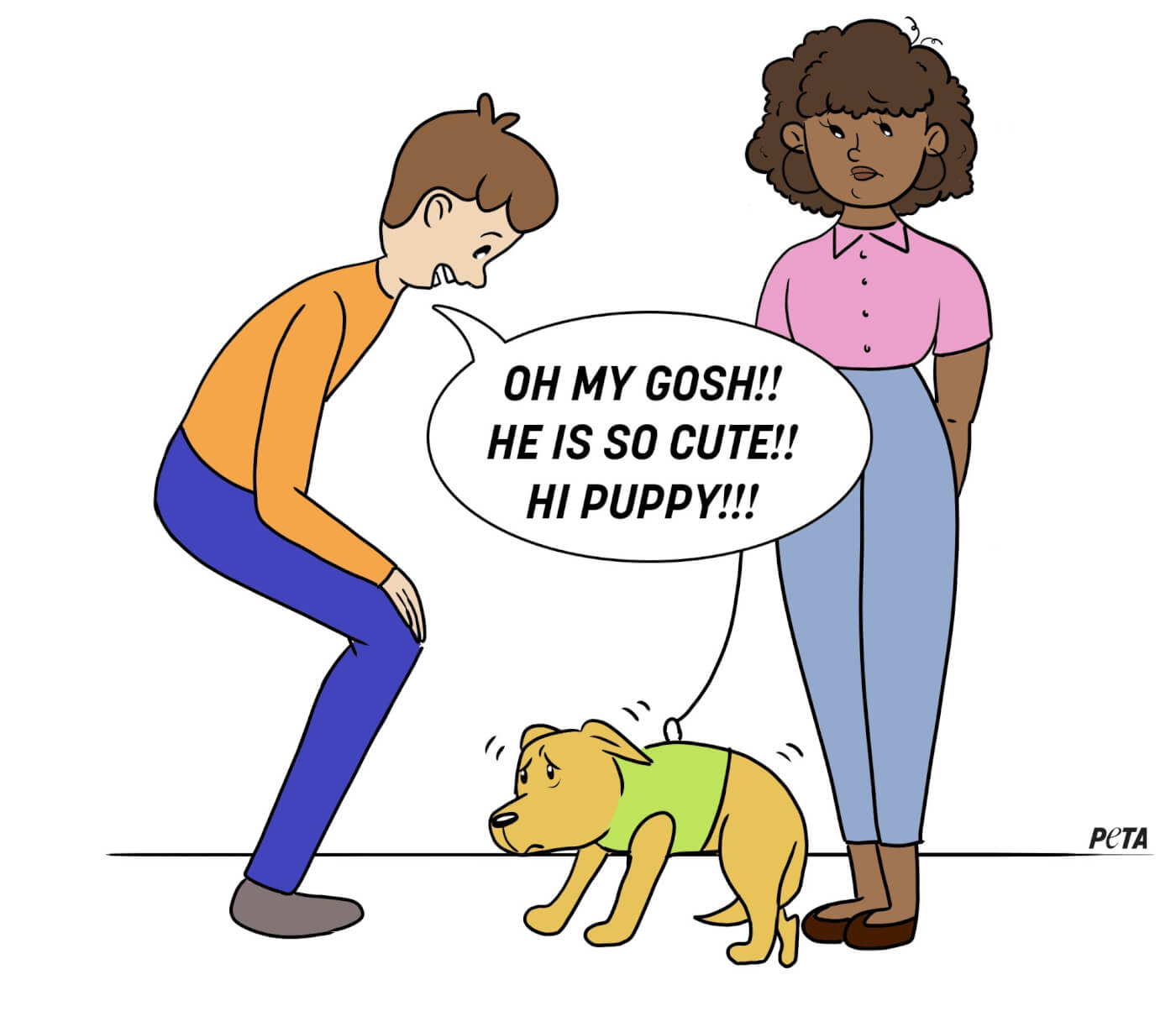
*****
Remember, some dogs—especially those who have been adopted recently—may not be accustomed to interacting with or ready to meet anyone outside their immediate family or social circle. By becoming familiar with dogs’ body language and culture and acting accordingly, you can help them build confidence and trust—and hopefully make some new canine buddies in the process.
Help us spread the word:
And if it’s you who just adopted a new canine companion, check out PETA’s comprehensive training guide to learn how to meet the needs of your new family member:
See how PETA fieldworkers help dogs and other animals in the documentary Breaking the Chain.
Text VEG to 73822 to get the latest vegan lifestyle tips, recipes, and urgent action alerts texted right to your phone.
Terms for automated texts/calls from PETA: https://peta.vg/txt. Text STOP to end, HELP for more info. Msg/data rates may apply. U.S. only.




